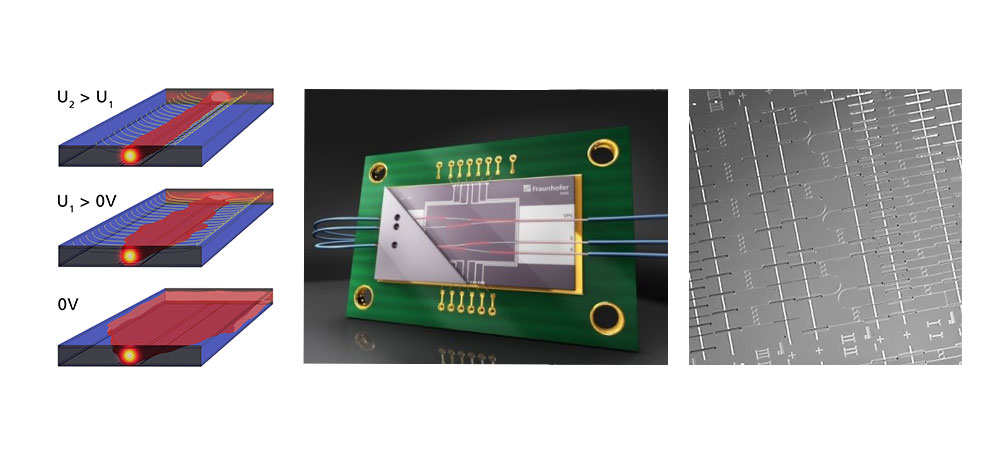Polarization independent liquid crystal waveguides

Many applications nowadays are sensitive to light polarization and require polarization maintaining components. Likewise, there are applications which demand polarization independent components, for instance when it is important to reduce the complexity of fiber optic networks and costs.
Fraunhofer IPMS electro-optically induced waveguides technology with liquid crystals on silicon backplane is attractive for optical switching applications. Key features stem from employing highly transparent liquid crystal blends as waveguide core materials. In particular, the optical power transmitted along the waveguide structure can be controlled by adjusting the electro-optical Kerr response strength in a liquid crystal layer on a sub-microsecond timescale with an applied electrical field. Essentially due to the underlying electrooptical effect, the propagation behavior of a light wave along the Fraunhofer IPMS liquid crystal waveguide is dependent on its polarization state.
A solution for polarization independent electro-optically induced waveguides in liquid crystals was nevertheless developed at the IPMS. In this case the optical losses in the TE and TM modes propagating along the induced waveguide can be controlled by the applied electric field distribution in the electrode backplane.
These waveguides are fabricated at the Fraunhofer IPMS by means of precision silicon wafer level technology. This fulfills the prerequisites for high quality, high volume and cost efficient manufacturing. A demonstration of a polarization independent waveguide is available.
 Fraunhofer Institute for Photonic Microsystems
Fraunhofer Institute for Photonic Microsystems